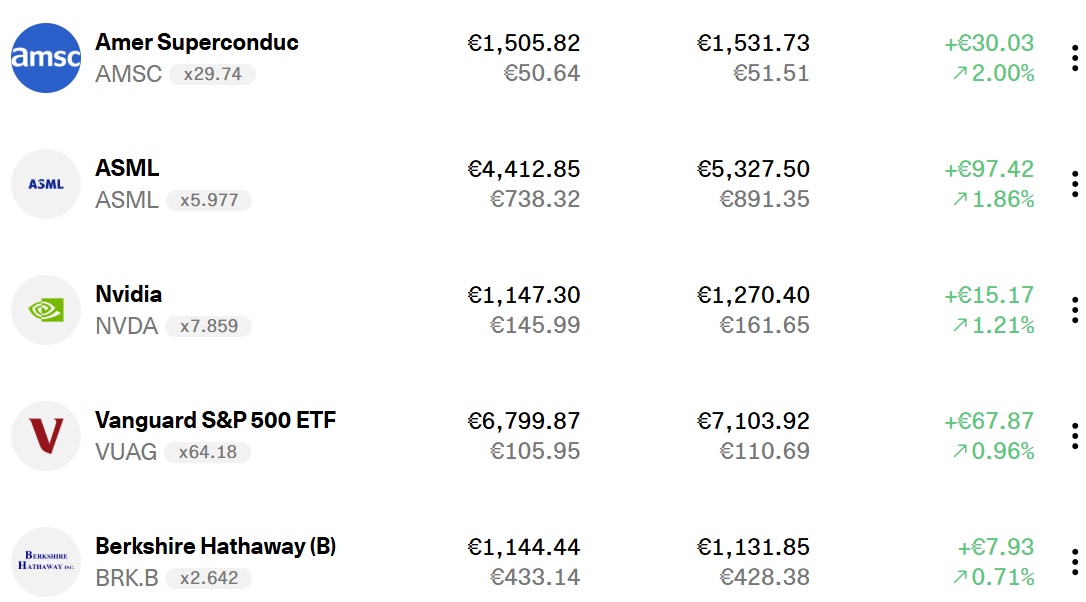Due to the booking of the inherited shares from my father's portfolio, my annual rewind is heavily distorted. Nevertheless, I would like to present my surprising "top performer windfall".
$JNJ (+0,13 %) + 30.21% since the beginning of June
2nd and 3rd place go to the Europe and Emerging Markets ETFs
$MEUD (-0,03 %) +19.84% over one year
$XMME (-0,07 %) +15.8% over one year
The $VUAG (+0,29 %) I've only had it since the middle of the year, when I $XZW0 (+0,27 %) when I reallocated.
The following had a negative impact on performance $1211 (-0,61 %) and $NOVO B (-0,9 %) have had a negative effect. However, I realized the losses here for tax reasons, so I cannot state the performance for the year.
I have reallocated quite a bit this year and am already very happy with my portfolio. I still have my eye on some interesting individual stocks, but my initial goal is to get back to a 70 percent ETF share. This means that next year I will mainly continue with the savings plans, provided I can keep myself under control :)
I wish everyone in the community a Merry Christmas and a successful 2026















